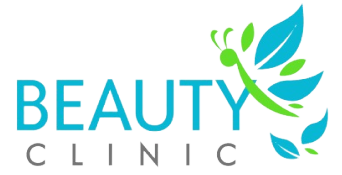Last year alone, more than 80 communities throughout the United States launched a new D.A.R.E. program taught by officers trained during one of last year’s 28 two-week, intensive D.A.R.E. training courses which collectively graduated 800 new D.A.R.E. officers. D.A.R.E. is a police officer-led series of classroom lessons that teaches children from kindergarten through 12th grade how to resist peer pressure and live productive drug and violence-free lives. Highly Trained Officers Deliver the Curricula – D.A.R.E. officers must complete a rigorous, 80-hour training course conducted by mentors with years of classroom experience, as well as university-level educators. All officers are taught to deliver the curricula exactly as they are written seeking the goal of 100% fidelity of delivery. In the 1990s, different polls started to show a reduction in the use of cocaine, L.S.D., methamphetamines, and marijuana. But opponents argue that the program – which condemned illicit substances – might have made the survey participants be more guarded and thus less likely to open up about using.
Con 1: The D.A.R.E. program does not help prevent drug use in elementary, middle, or high school students.
The purpose of the lesson is to teach teens to recognize the signs of depression in themselves and others, challenge the stigma surrounding depression, demystify the treatment process, and encourage students to talk to a trusted adult about mental health concerns. The acronym REAL is the central message of the curriculum and teaches youth four ways to refuse drug offers — Refuse, Explain, Avoid, and Leave. These strategies help youth stay away from drugs by preparing them to act decisively and responsibly in difficult situations. The curriculum teaches students how to resist drugs offers by presenting practical strategies that are easy for them to remember and use. Scientific American is part of Springer Nature, which owns or has commercial relations with thousands of scientific publications (many of them can be found at /us). Scientific American maintains a strict policy of editorial independence in reporting developments in science to our readers.
What Is the D.A.R.E Program? History and Update
D.A.R.E. offers the most comprehensive prevention curricula available for K-12 why d a.r.e. d.a.r.e. america students anywhere. The curriculum meets multiple National Core Standards in the areas of Reading (Literature, Informational Text, and Foundational Skills), Writing and Speaking and Learning. The 10 lessons in D.A.R.E.’s keepin’ it REAL elementary curriculum are aligned with National Common Core 5th grade standards.
Elementary School Products
From the D.A.R.E. kiR middle school curriculum, the D.A.R.E. kiR elementary curriculum evolved. The D.A.R.E. kiR elementary curriculum has been established as being evidence-based ⁴, the only elementary prevention education curriculum to have efficacy verifies through rigorous, longitudinal scientific study, with results published in a recognized peer-review journal. Since 2018, more than 250 communities throughout the United States launched a newD.A.R.E. Elementary, middle, and high school curricula, as well as critical enhancement lessons on subjects including opioid abuse prevention, vaping, and teen suicide, are now being taught in these communities by officers who attended one of the 75 two-week, intensive D.A.R.E. training courses conducted since 2018. More than 2,000 new D.A.R.E. Officers from virtually every state in America were graduated.
- Keepin’ it REAL, the new D.A.R.E. program, is based on evidence and the latest science.
- These items were repurposed by drug culture as ironic statements starting in the 1990s.
- Free K-12 Opioid & Prescription Drug Abuse Prevention Curricula – D.A.R.E.’s enhancement lessons include the only FREE K-12 Opioid & OTC/Rx abuse prevention package of lessons available.
- A 2009 meta-analysis of 20 controlled studies by two statisticians revealed that those who participated in the D.A.R.E. program were just as likely to abuse substance as those who got no intervention.
- The Center lists keepin’ it REAL as “research validated”…its equivalent of an evidence-based ranking.
- Significant intervention effects in thehypothesized direction were observed during the 7th grade for measures ofstudents’ general and specific attitudes toward drugs, the capability to resistpeer pressure, and estimated level of drug use by peers.
D.A.R.E. began as a small, local program but quickly grew to nationwide and eventually international use. After the program’s rapid and expansive growth in the 1980’s and recognizing its growing national demand, D.A.R.E.’s early community leaders founded D.A.R.E. America in 1989 as a 501(c)(3) non-profit organization to oversee, guide, and manage its development and national and international expansion. The D.A.R.E. program was started in 1983 by the chief of the Los Angeles Police Department (LAPD), Daryl Gates, in conjunction with the Los Angeles public school system. Our editors will review what you’ve submitted and determine whether to revise the article.
Success of D.A.R.E. America and the D.A.R.E. kiR program
With the tremendous success of the D.A.R.E. program in the United States in the 1980’s, other countries facing significant drug abuse problems among their youth approached D.A.R.E. America for guidance and assistance. Since its earliest beginning, D.A.R.E. has been a highly decentralized program building upon its strong foundation of collaboration at the local level between school districts and educators, law enforcement agencies and their officers, and families and students. Today, it’s the largest program of its kind that also develops and reinforces school and community-based prevention and community-oriented policing.
The oversight from DARE America, which includes substance abuse and prevention specialists, keeps the latest science at the forefront of the program. D.A.R.E. lessons are derived from SMART, an anti-drug program developed by the University of Southern California. However, police officers in uniform deliver the D.A.R.E. lessons instead of teachers. In many programs, police officers spend time with students enjoying recreational activities or engaging in conversation.
- Drug educators are already billing it as the hot new manual that willgive mom and dad the tools to talk to their kids about drugs – there’s even a2,000-word glossary of slang terms.
- He says those classes failed to prepare him and his peers for an increasingly dangerous drug landscape in which a single high can have deadly consequences.
- Scientific American – In its September 10, 2014 issue, Scientific American published an article entitled, The New D.A.R.E. Program – this one works.
- These local institutions, found universally in all communities, benefit substantially when there is “collaboration” among representatives of the various institutions.
- Amanda earned a Bachelor of Science degree in Social Work from Purdue University, graduating Magna Cum Laude, which serves as a strong educational foundation for her contributions.
- A study produced alarming results with graduates showing a 29% increase in substance abuse and a 34% rise in tobacco use.
«Whatgot RTI in the most hot water is that they said other programs work better,»says Mount Holyoke’s Moran. RTI found that not only did D.A.R.E. have no effecton drug use, it was crowding out money from programs that did. Dr. HerbertKleber, a Columbia University professor of psychiatry who heads D.A.R.E.’sscientific-advisory board, said that the study was based on an outdatedD.A.R.E. Curriculum and called alternatives «boutique programs,» which wereperformed only in highly controlled environments.
The New D.A.R.E. Program—This One Works
The two high school curriculums were developed by Rutgers University and the University of North Carolina, Greensboro respectively. These curricula have been proven effective through rigorous scientific evaluations. The D.A.R.E. kiR elementary curriculum is currently the subject of rigorous scientific evaluation, results of a preliminary evaluation of the curriculum conducted by Chapman University showed positive outcomes. Over the past three years, 118 D.A.R.E. Officer Trainings have certified 2,458 law enforcement officers to teach D.A.R.E.’s evidence-based and proven effective keepin’ it REAL elementary and middle school curricula and myPlaybook high school curriculum. D.A.R.E. curricula have been proven effective and evidence-based through multiple studies.
Pro 1: The D.A.R.E. program helps prevent drug use in elementary, middle, and high school students.
D.A.R.E. was one of the most popular drug education and prevention school programs in the 1980s and 1990s. It was active in 75% of school districts and had government funding.3 However, its popularity and growth were more beneficial for profits and merchandising opportunities than the intended purpose—to prevent drug abuse. This article reports the results of a five-year, longitudinal evaluations of theeffectiveness of Drug Abuse Resistance Education (D.A.R.E.), a school-based primarydrug prevention curriculum designed for introduction during the last year ofelementary education. D.A.R.E. is the most widely disseminated school-basedprevention curriculum in the United States. D.A.R.E. Keepin’ it REAL is a science—and evidence-based curriculum that improves on the previous program and seeks to fix its mistakes. The new program prioritizes peer interactions and developments in addiction science rather than fear-based or profit-motivated lesson plans.
The study also uncovered that D.A.R.E.’s curriculum resulted in a 3 to 4% increase in cigarette and alcohol use among 11th-graders who never used in 7th grade, compared to those who never joined the program. The Keepin’ it REAL curriculum is an adaptable and science-based curriculum that can be used in schools nationwide. It also has different programs to reach groups with unique risk factors for drug abuse.
D.A.R.E. lost federal funding because it was not evidence-based, which was a recent requirement set by the Department of Education. Teens are dying after taking what they thought was Adderall or Percocet, but turn out to be fentanyl-laced counterfeit pills. «Nobody ever told me about how to drink safely and how, if I use pills, you know, they have different effects on you and what those effects are, and how it could just kill you — just one night, bad pill, it could all go down the drain.»


